Features of the choice of curtains
For scandinavian interior It is necessary to choose curtains:
- simple and concise forms;
- calm colors;
- stitched from natural fabrics.
In the photo there is a Scandinavian-style dining room located by the window with linen curtains.
The photo shows a Scandinavian-style living room with milky-colored curtains.
What types of curtains are better to use in the interior?
In Scandinavian interiors, you can use both long flowing curtains and tulle, and short blinds of a louvre type. The main requirement for the textile design of window openings is restraint, simplicity and ease of use.
Portieres
Long draped curtains, as a rule, translucent, do not prevent direct sunlight from entering the living space. Often they are used without tulle, which creates a feeling of unity with nature outside the window.
Curtains (tulle)
Curtains, or transparent tulle, are also found in Scandinavian interiors. They transmit light well and decorate the window.
Roman curtains
Roman curtains are used as an independent element for window decoration, and as a complement to long curtains.
In the photo there is a Scandinavian living room with Roman curtains made of cotton fabric.
Jalousie
Blinds in Swedish design are quite common, as they have a concise look and support the aesthetics of minimalism in the interior.
Roller blinds
Roller blinds also support the Scandinavian direction and are quite practical to use.
What material to choose for curtains?
As a material for curtains, natural fabrics are used. It is practical, aesthetically pleasing and concise, which is most consistent with the Swedish approach to interior design. The following materials are used in sewing curtains:
- Linen - natural fabric woven from plant fibers and having a characteristic structure. Linen curtains have light transmission, hygroscopicity and durability. The fabric is easily creased, not always perfectly draped, and this just characterizes the Scandinavian style, far from deliberate and pompous. When determining the length of the curtains, it should be borne in mind that pure linen is prone to shrinkage, but if there is a small amount of viscose in the composition, then the fabric becomes more static. Flax has natural colors, or painted in light shades.
- Cotton - natural fabric of plant origin, rather dense and elastic. Its structure depends on the production method, thickness and configuration of the threads. The material is well stained, which means that it is ideal for colored curtains. They slightly crease, are easily draped, and do not interfere with the penetration of sunlight into the room.
- Chintz - thin cotton fabric obtained by tight weaving of threads, due to which it becomes elastic and static. This allows you to use chintz for sewing rolled and Roman curtains. Thin, translucent chintz curtains also fit perfectly into the Scandinavian style, they create a cozy atmosphere and are unpretentious in use.Can be both plain and color.
- Muslin - natural fabric woven on the basis of cotton, silk or wool. The properties of the material depend on the composition. So, the cotton component gives strength and uniformity of the structure, silk makes the fabric smooth, thin and elastic, and the wool gives structure and friability. Muslin curtains have a soft texture, excellent drapes and have unique tactile properties.
In the photo there is a cozy Scandinavian style living room with beige curtains with pick-ups.
Types of cut of the Scandinavian curtains
Textiles for windows provide a simple cut and restrained design, but accent details are allowed. For example, you can sew curtains on loops, with a hem sewn on top or bottom, or add strips of fabric vertically. A variety of frills and lambrequins are not welcome, but you can use concise pickups.
In the photo there is a stylish Scandinavian-style bedroom with laconic curtains on the hinges.
Photo ideas in the interior of rooms
There are many options for window design depending on the purpose of the room.
Kitchen
Scandinavian-style kitchen curtains maximize the view outside the window and let the light into the room. This creates the necessary comfort for cooking and eating. Curtains can be long if space permits. In small kitchens, practical short, roll or roman curtains are used.
In the photo there is a kitchen with an accent wall and dark curtains made of natural fabric.
Living room or lounge
The curtains for the living room in the Swedish style bring home comfort and set up to relax in the family circle.
Bedroom
The curtains for the Scandinavian bedroom create a sense of security from the outside world, but do not overload the room.
Children's room
The world of a children's room should be individual and special. In Swedish design, striking details are not only children's toys, books, decor, but also curtains.
Loggia or balcony
According to the Scandinavians, curtains on the loggia or balcony should not obscure the view of the beautiful scenery outside the window.
In the photo there is a loggia with a sitting area and stained-glass windows framed by curtains.
Color spectrum
Scandinavian-style curtains should either dissolve in the general color scheme or create an accent in the interior. If it is a soft, muted color palette, pastel colors, then the curtains are suitable for the most delicate, light shades. If the interior is made up of contrasts, then you can use curtains with geometric ornaments inherent in this particular style, for example, a zigzag, strip or repeating pattern.
The most acceptable colors for curtains:
- White - will make the interior light and airy.
- Gray - will connect white walls and black decor into a single ensemble.
- Turquoise - shade the cold colors of the Scandinavian interior.
- Yellow - enliven the interior and add sunlight.
- Beige - will create an atmosphere of warmth and comfort.
- Pink - will give the room softness.
- Blue - Add elegance to the interior.
The photo shows a cozy Scandinavian-style bedroom with pink curtains.
Scandinavian-style cornice recommendations
The Scandinavian interiors use the simplest and most concise cornices, usually single.
According to the type of mounting, they differ:
- Cornices of circular cross section with wall mounting. They are strung on curtains equipped with hinges, rings or grommets. Such holders for curtains are convenient in everyday life and act as a decorative element in the design of windows in the Scandinavian style.
- Flat ceiling cornices, which are as invisible as possible in the interior. At the same time, special braid and hooks are used to hang the curtains. Such cornices can be hidden in a specially designed niche under the ceiling, which allows you to achieve the effect of "soaring" curtains.
The photo shows a Scandinavian bedroom with linen curtains.
Photo gallery
Choosing curtains in the Scandinavian style, you must remember that aesthetics are simplicity and naturalness.


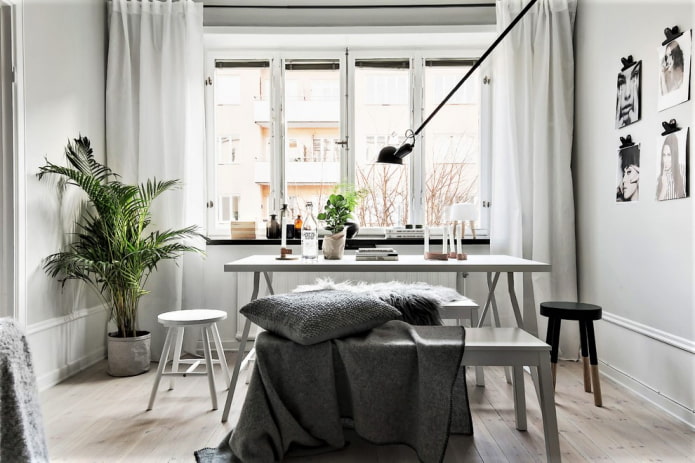
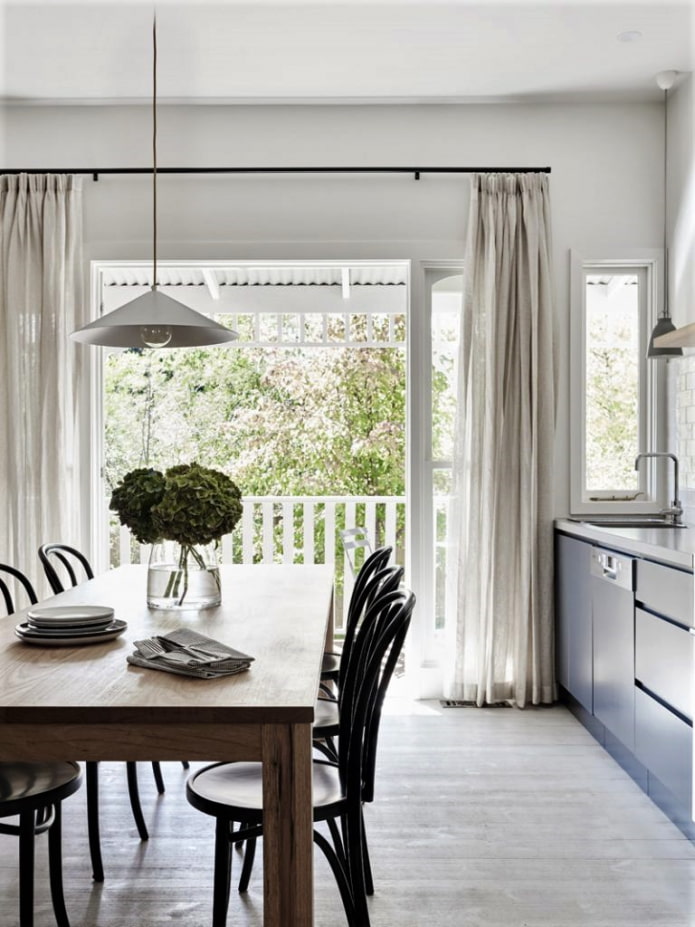
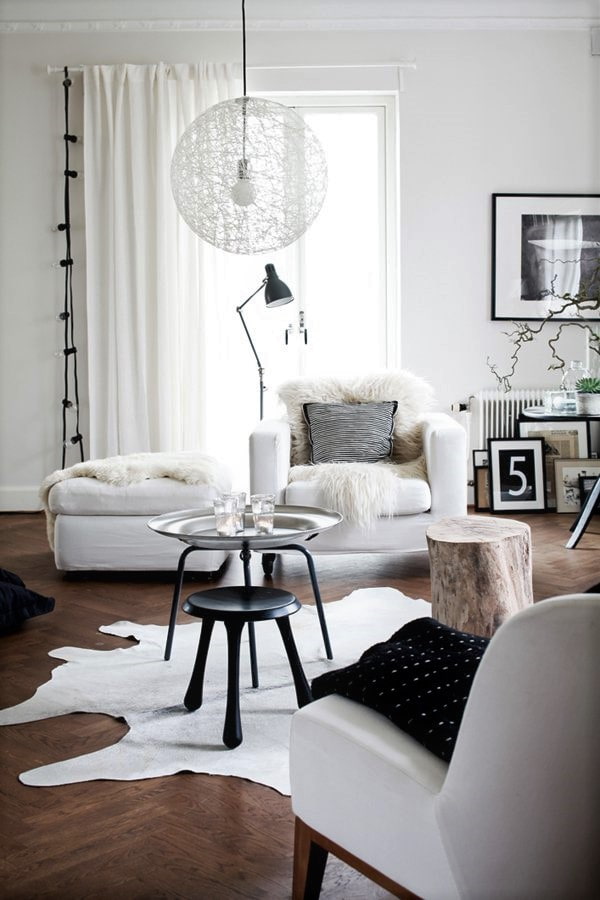
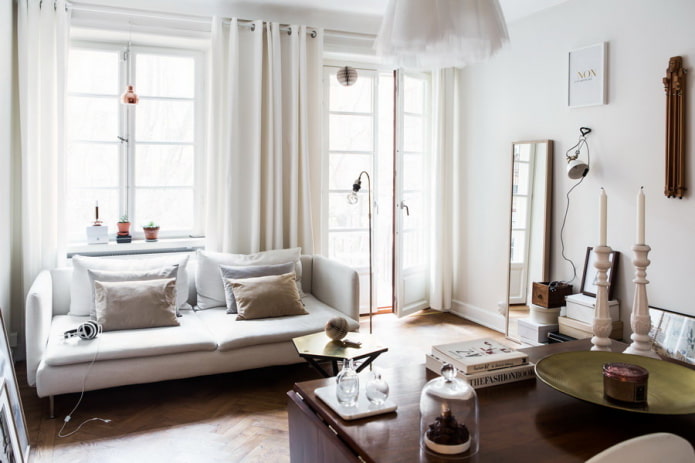


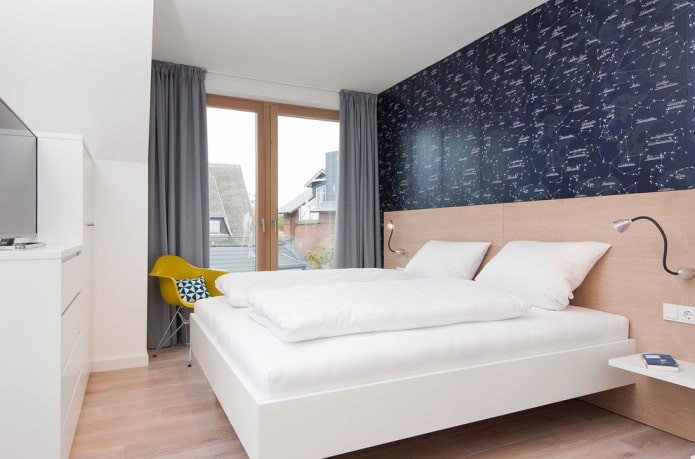

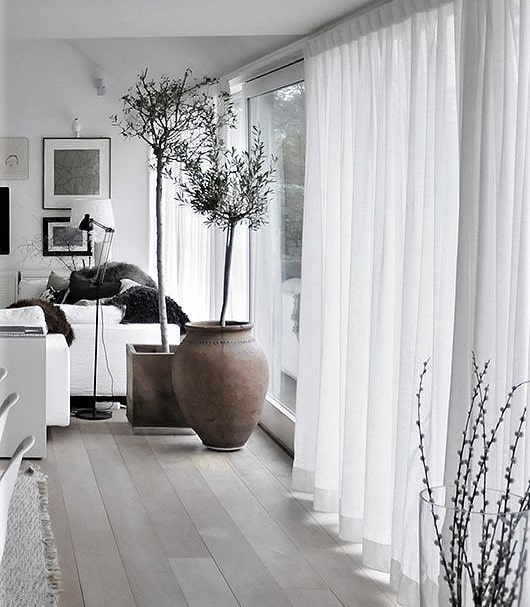
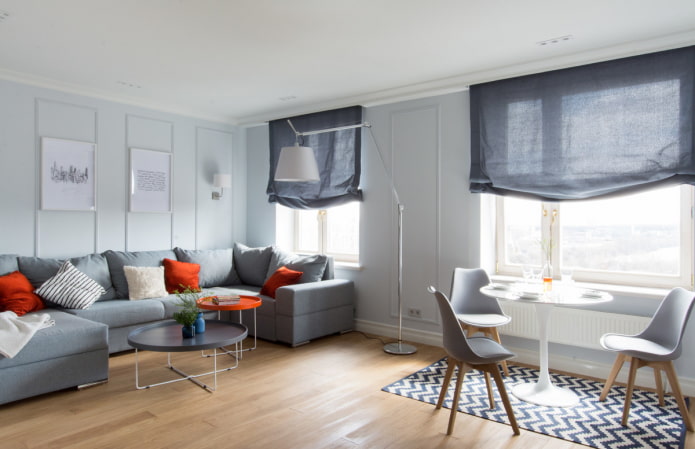
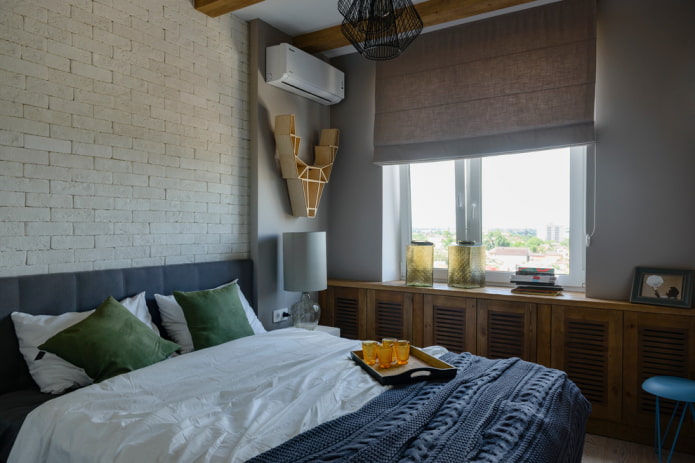
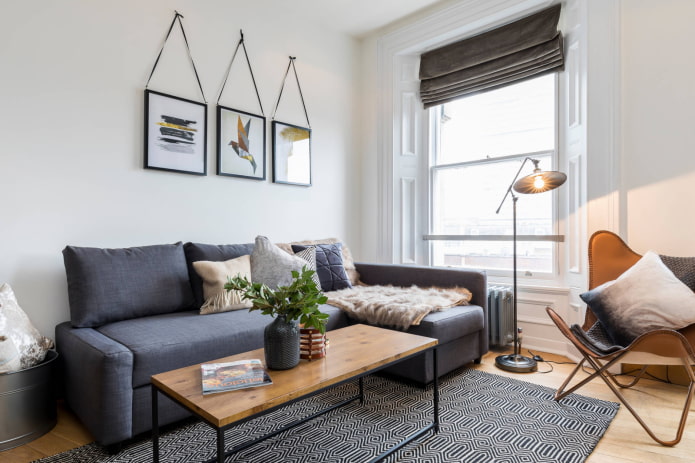

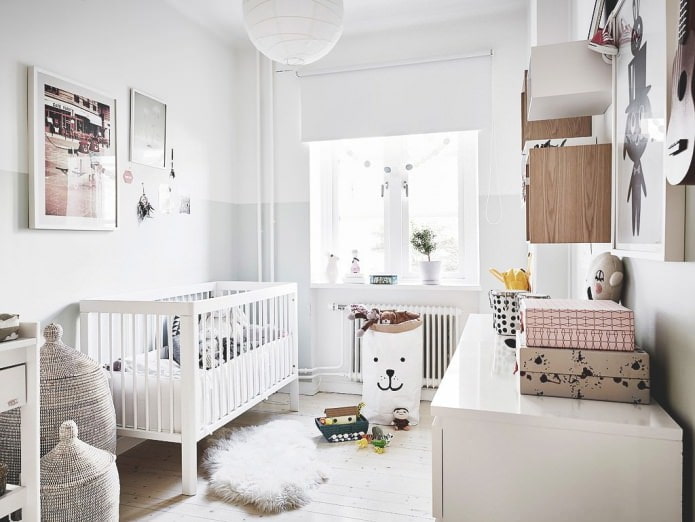


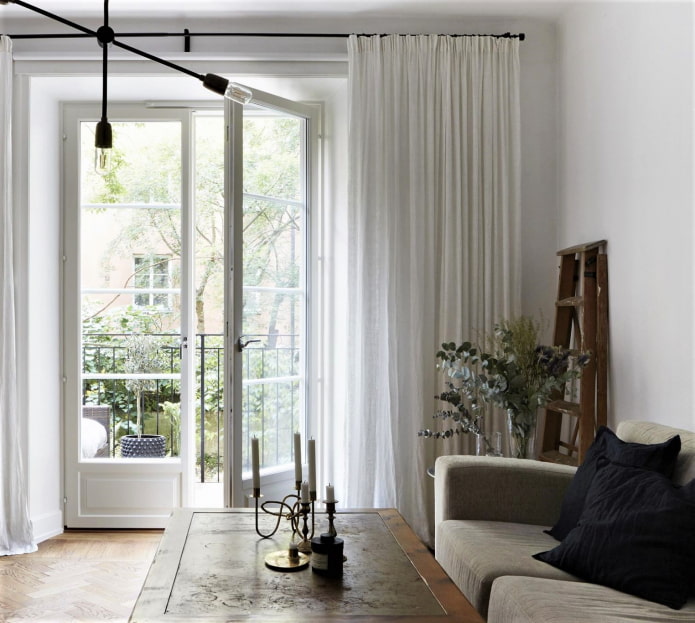
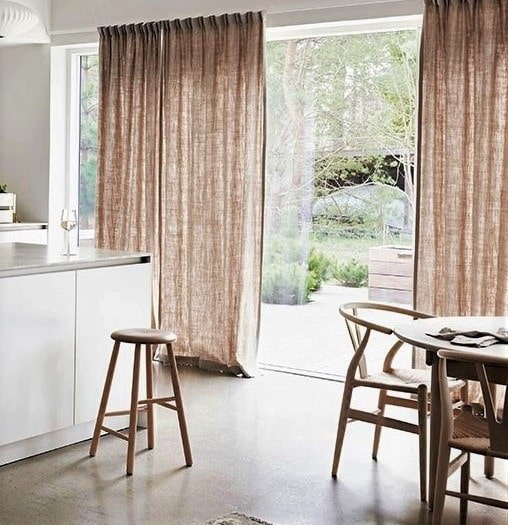

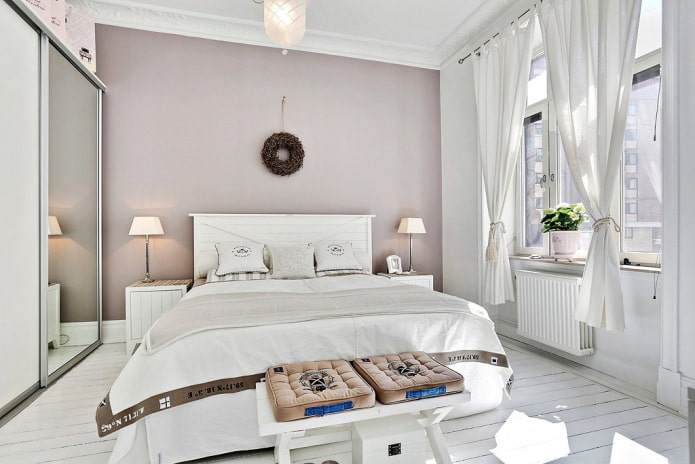

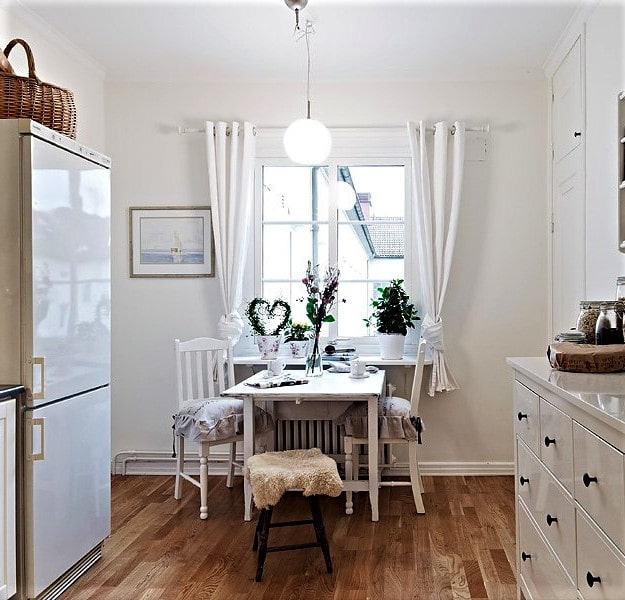

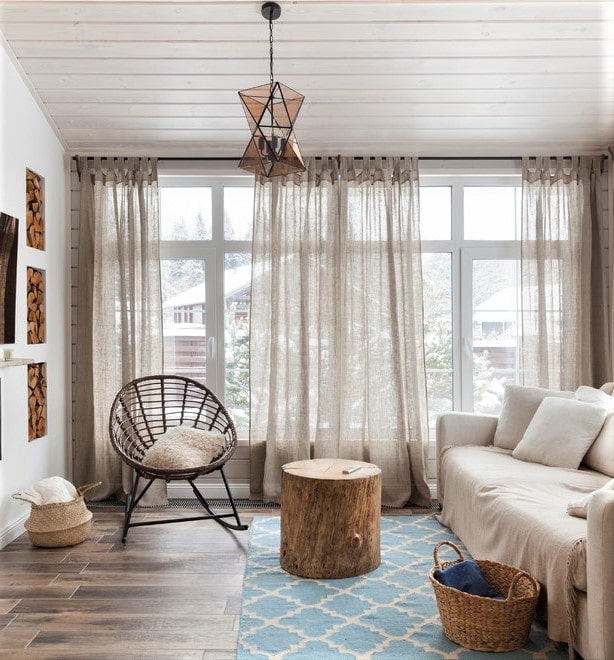
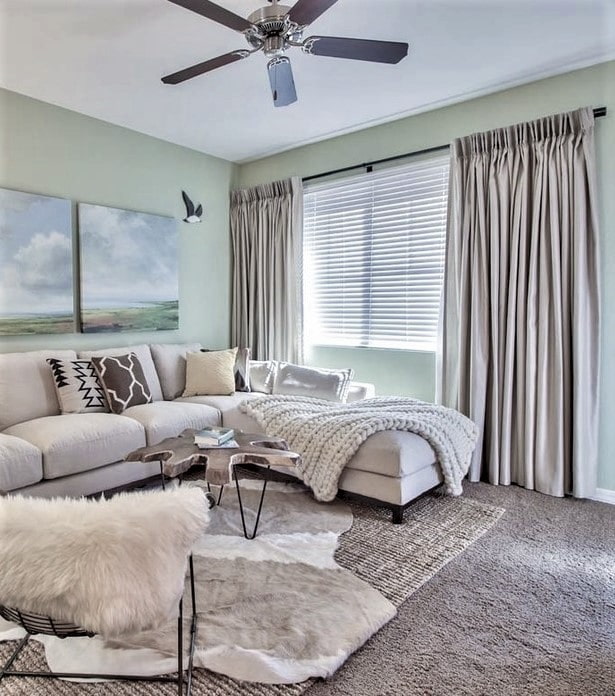
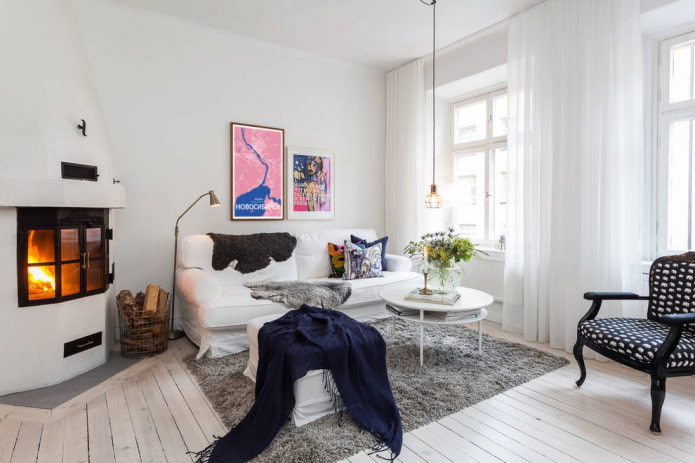
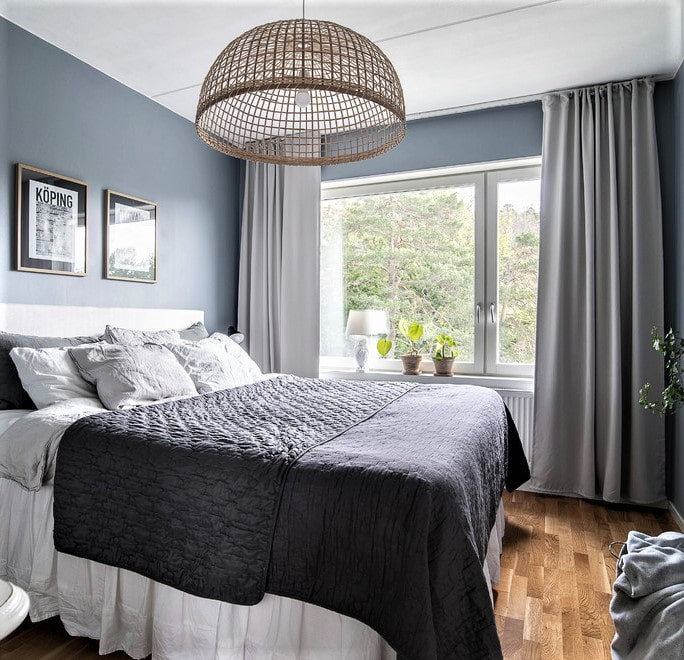
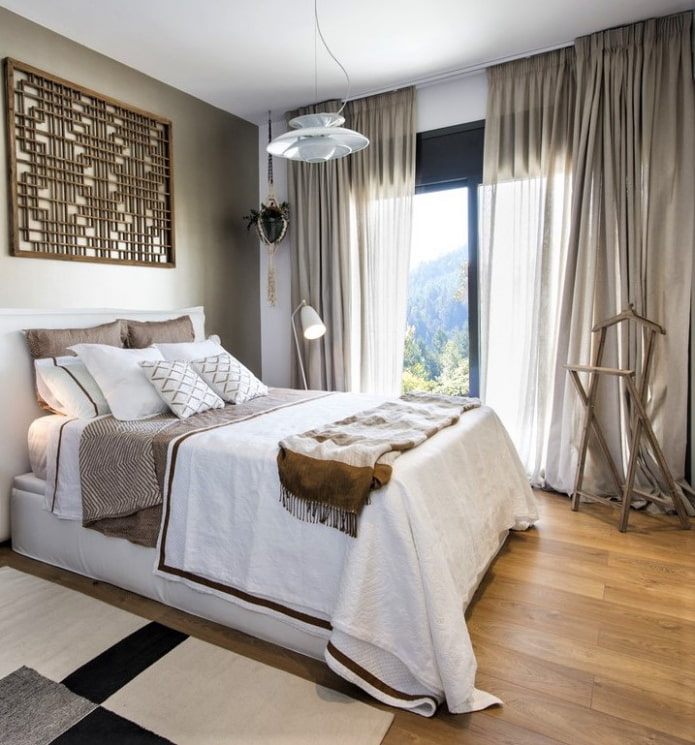
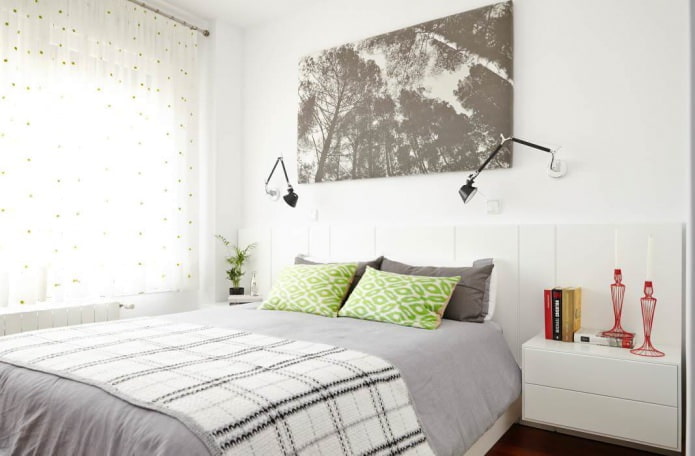
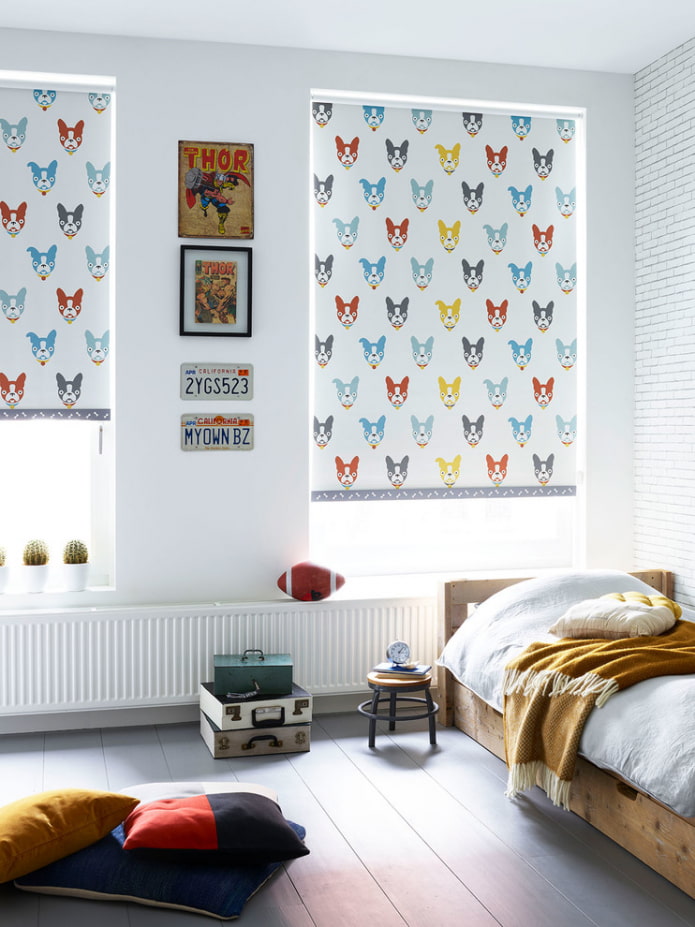
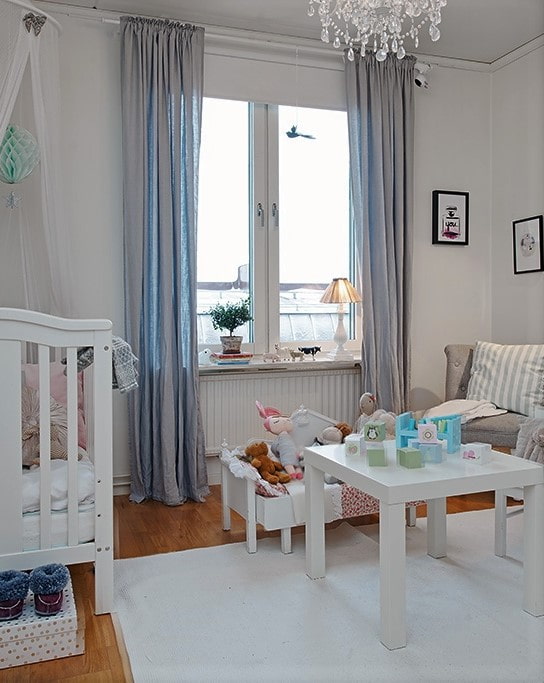
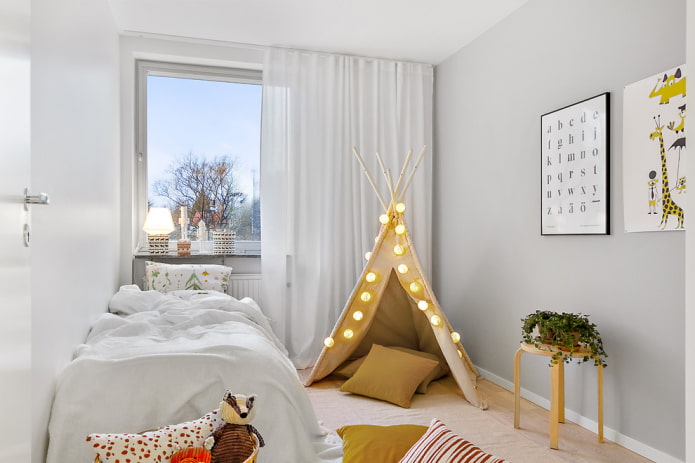

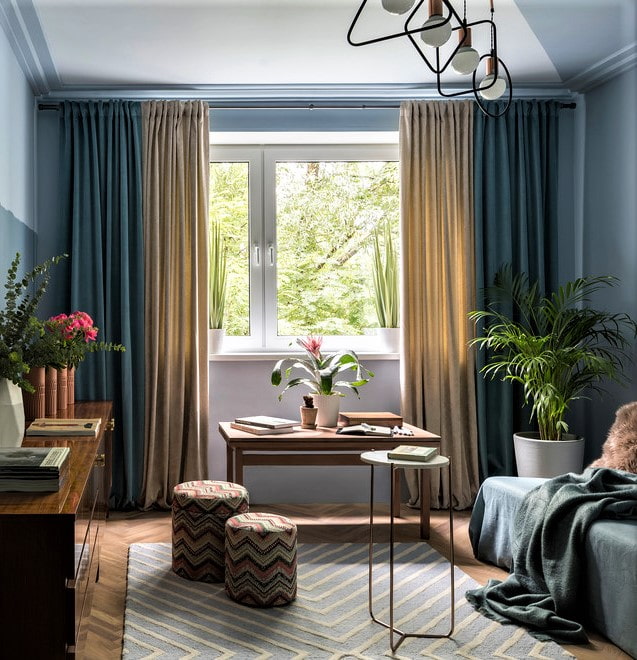


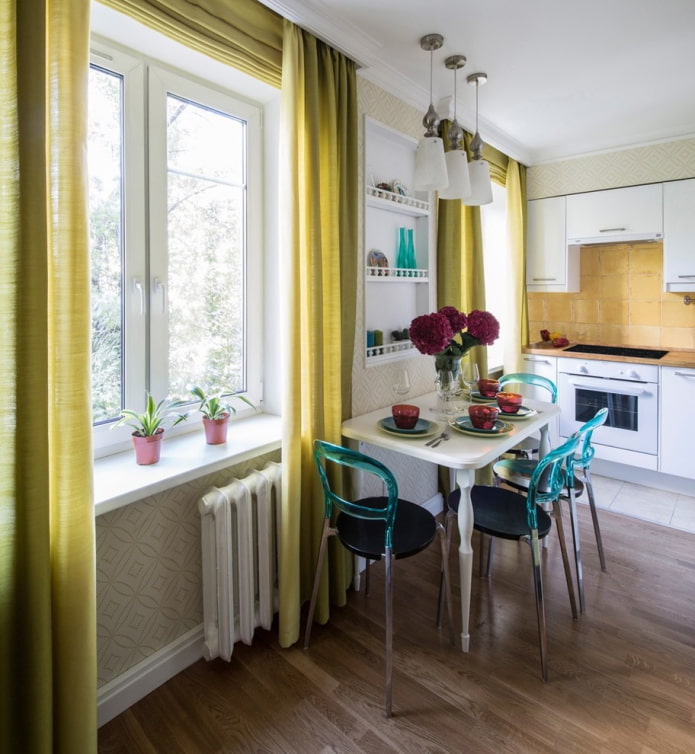

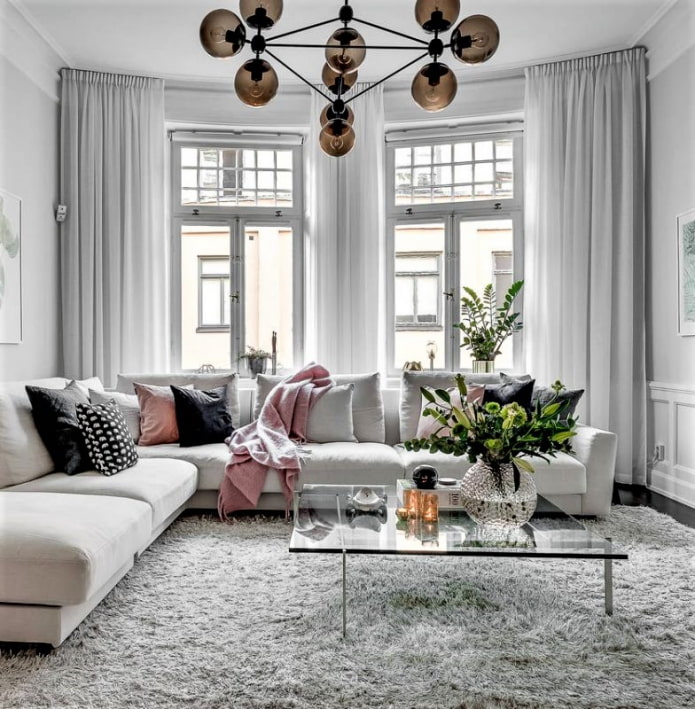

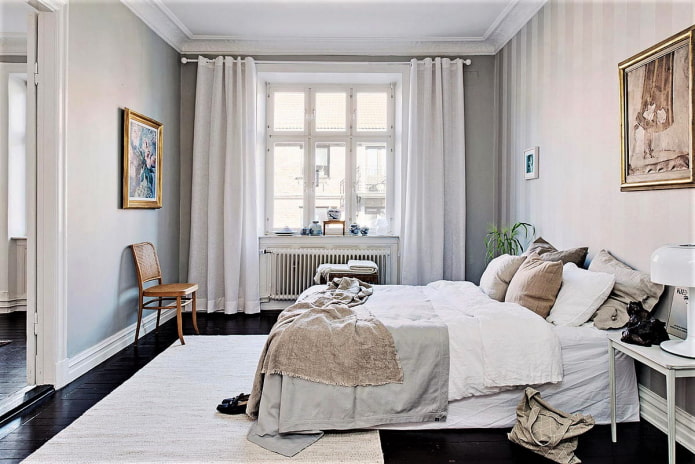
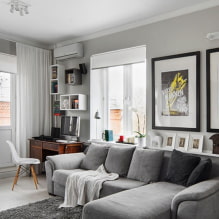
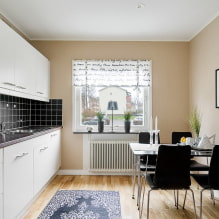
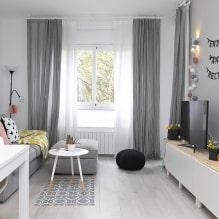
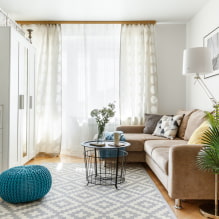

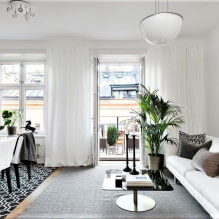
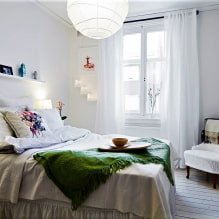
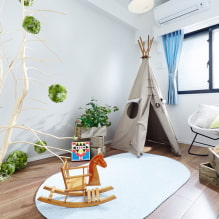
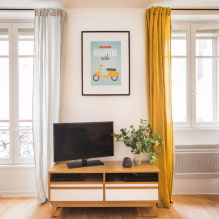

 Top 10 Trends in Interior Design 2020
Top 10 Trends in Interior Design 2020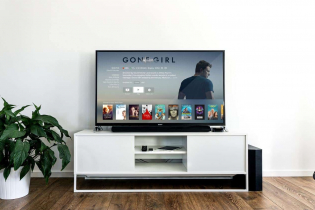 Rating of cheap TVs with Smart-TV
Rating of cheap TVs with Smart-TV New Year's LED garlands on AliExpress - we disassemble while it is hot so that the house is bright
New Year's LED garlands on AliExpress - we disassemble while it is hot so that the house is bright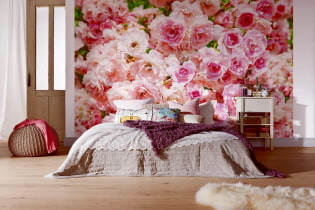 Wall mural with flowers in the interior: living wall decor in your apartment
Wall mural with flowers in the interior: living wall decor in your apartment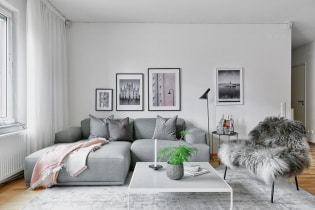 Gray sofa in the interior: views, photos, design, combination with wallpaper, curtains, decor
Gray sofa in the interior: views, photos, design, combination with wallpaper, curtains, decor Interior in peach tones: meaning, combination, choice of finishes, furniture, curtains and decor
Interior in peach tones: meaning, combination, choice of finishes, furniture, curtains and decor